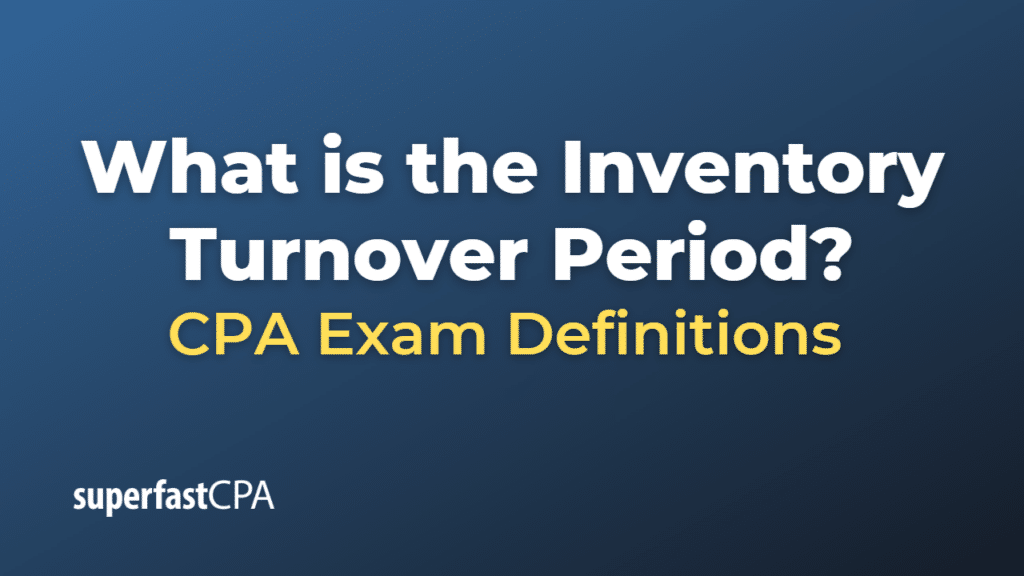Inventory Turnover Period
The inventory turnover period, also known as the days’ sales in inventory or the inventory holding period, is a measure of the average number of days that items stay in inventory before they are sold. In other words, it indicates how long a company typically holds onto its inventory before it’s sold.
The formula to calculate the inventory turnover period is:
Inventory Turnover Period = 365 / Inventory Turnover Ratio
Here:
- The inventory turnover ratio is calculated as Cost of Goods Sold (COGS) / Average Inventory. This ratio tells you how many times the inventory has been sold and replaced in a period, typically a year.
- 365 is the number of days in a year.
The inventory turnover period provides insight into a company’s efficiency in managing its inventory. A shorter period can suggest strong sales and efficient inventory management, but it may also indicate a risk of stockouts. A longer period can indicate slower sales and a risk of excess inventory, which can tie up capital and potentially lead to obsolescence.
It’s worth noting that what constitutes a “good” inventory turnover period can vary widely depending on the industry. For example, in industries with perishable goods like food or flowers, a shorter inventory turnover period is desirable to prevent spoilage. In contrast, industries with durable goods like cars or furniture might have a longer turnover period.
Example of the Inventory Turnover Period
Let’s continue with the example of Best Electronics, the hypothetical electronics store.
In the previous example, we calculated the inventory turnover ratio to be 4.44. This means that the store sells and replaces its entire inventory about 4.44 times a year.
Now, to find out how long on average an item stays in inventory before it’s sold, we can use the inventory turnover period formula:
Inventory Turnover Period = 365 / Inventory Turnover Ratio
So, for Best Electronics:
Inventory Turnover Period = 365 / 4.44 = approximately 82 days
This suggests that, on average, an item stays in inventory at Best Electronics for about 82 days before it’s sold. This duration can provide valuable insights into the company’s inventory management and sales performance.
For example, if Best Electronics has certain items that typically stay in inventory for much longer than 82 days, the company might need to review its purchasing decisions or marketing strategies for those items. On the other hand, items that are sold much more quickly might be in high demand, suggesting that the company could potentially increase sales by stocking more of those items.














